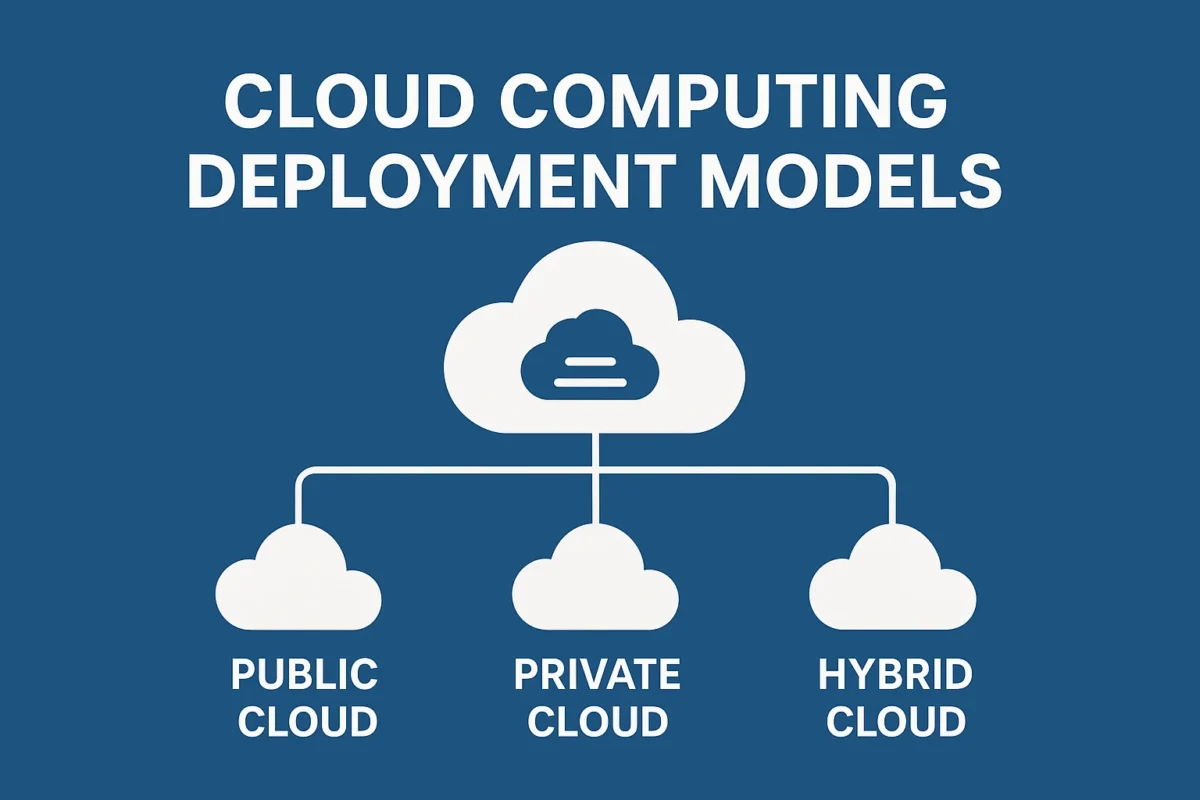Cloud computing development model sounds like a technical idea but they are part of our daily life more than we realise. Every photo you upload, every bank app you open, every online order you track – some cloud system is working quietly in background. A few years ago businesses had to spend millions on servers, data rooms, wires and hardware. Today many of them do not even own a physical server. They just rent a space on the cloud whenever they need it. It feels unreal but that’s why cloud computing development models changed everything.
Companies now treat the cloud like a tool box. Instead of buying everything at once they pick up what they need, when they need it. Storage, software, security and backup is all come from the cloud. A small start-up can work like a giant tech company simply because cloud system give them power . They could never afford on their own.
Understanding cloud computing development models
When someone hears cloud, the picture something floating in the sky But the cloud is really just computers connected across the world. Cloud computing development models explain who controls them, who uses them and how the data moves around. Some clouds are shared by everyone. Some are private and locked. Some are mixed and some are shared only by a group with similar goals.
There is no best choice for everyone. A tiny bakery, a government office, a hospital and an online gaming company all different things. One wants low cost one wants high security. One wants a speed. That’s why four major type exists, public, private, hybrid and community.
Types of cloud development models
Let us break down types of cloud computing models, without the heavy technical language.
The public cloud is the easiest to understand. Think of it like renting a room in a huge building like big companies. For example, AWS, Google cloud and Microsoft offer it. You do not buy machines. You do not run wires. You do not worry about cooling system or back up power. You just pay for storage or services you use. When you need more space you click a button. When you need less, you scale back. That’s why new businesses love the public cloud. It keeps them fast, cheap and flexible.
The private cloud is different. It belongs to one company only. Hospitals, bank and Government officers use it because their Tata cannot be shared with a stranger. With a private cloud, you decide how secure it is who can login and where the data stored. It cost more money but that extra control keeps sensitive information safe. Nobody likes the idea of medical record or banking details floating around the internet. So private cloud exist for that reason.
Now to the middle point hybrid cloud architecture. This is where most modern companies and. Hybrid system combines both words. One part states private to protect important data. The other part uses the public cloud for a speed or heavy traffic. It feels like having two engineers in one car. When businesses get busy, the public cloud handle the rush. When things slow down The private takes over.
The force member of the family is the community cloud model. This team work in digital work. School, labs and charities or organisation with similar goals share one cloud. The product data together. They split the cost they use the same tools. The community cloud model benefits group that cannot afford a private system alone but need still need privacy and trust .
Read Also:- Cloud computing compliance and regulations
Public versus Private cloud comparison
A proper public versus private cloud comparison is not just about money. It is about what a business value is the most. Public cloud are cheap, fast and easy. You do not hire a big IT team. You do not wait months to set up a server. You just sign in and start working. Updates and security patches happens in the background. The downside? Because you share space with others, you lost some control.
Private clouds are opposite. You own everything. You said the rules. You decide who enters. You decide how tight the security must be. That’s power comes with a price. Buying service, keeping that cool, hiring IT staff – none of that it’s small But for industries like banking and healthcare, privacy is not negotiable. They need a private cloud, even if it cost more.
So when you look at a public versus private cloud comparison, the answer depend on the situation. If savings matters, public works. If safety and control manners, Private wins and if a company wants both it picks hybrid cloud architecture
Hybrid cloud architecture

Hybrid cloud architecture feels like having the best of both words. Many companies start on a public cloud. When they grow, they keep sensitive information in a private system. During busy months, they use the public cloud for extra traffic. Imagine an online store during a festival sale. At midnight thousand of peoplerush to order them. If the store uses only private servers, the system might crash. With hybrid cloud architecture, the extra load jumps to the public cloud. Customers don’t even notice the switch. After the sale, everything goes back to the normal this like smooth and cheap and fast. Hybrid system also helps the reliability if the private part fails, the public part keeps moving. Nothing stops. That kind of safety can save millions. No brand wants to appear off-line for even five minutes.
Community cloud model benefit
Some people do not hear about the model often, but the community cloud model benefits a lot of real places. Hospitals can share digital records. School can share learning software. Research teams can store huge data safely. Everyone uses one system. Everyone pays less. Everyone gains more. This model does something powerful. It gives a small organisation big power. Instead of waiting for government funds or building expensive centres, they jump into the cloud together. It feels fair and smart.
Why cloud morals matter in real life?
Choosing between the different cloud computing development model shaped our companies survive. It affects money, security and speed and growth. A new start-up might begin with the public cloud. Hospital will stay on private. A university might choose the community model. A gaming company might choose hybrid because Traffic changes every hour. And the best part? Once our businesses pick a model, it can change later. Cloud system are not permanent walls. They are flexible and they are magic.
Cloud model, you use every day
Even if you’re not aware of it, you live with cloud system daily. Social media runs on public clouds. Streaming app use hybrid system because they deal with huge traffic. Banks use private clouds. When you approve a photo and see it on another device, that is the cloud working quietly . Cloud computing development models are like power station. They run our digital work without showing off.
A real life ways to see public versus Private cloud comparison
Think of Google photos. Anyone can use it. It is fast, simple and free. That is a public cloud. Now think of computer room in your office. All staff can enter. Data stays locked. That is the private cloud. One gift of freedom. The other guest protection. Both matters and both are different problems.
The future of cloud computing development model

Cloud computing model are not slowing down. Public clouds are becoming safer. Private clouds are becoming easier to use. Hybrid cloud architecture is growing fast. Why. Companies do not want to choose one site anymore. They want everything. Artificial intelligence is also stepping in. AI can move data automatically to the cheapest or safest location. If one hour fails, AI sends the Tata somewhere else. No human needs to panic. Automation keeps things running. In few years, the cloud will become even smarter. Systems might fix themselves. Detect threats and stored data based on the Weather, cost or speed. That sound futuristic, but it is already happening quietly.
The challenges and the wins
Nothing is perfect. Public cloud services can worry people about privacy. Private cloud system cost more. Hybrid cloud needs careful planning. Community cloud Need trust. But the winds are bigger than the issues. The cloud helps small companies compete with big ones. It reduce waste. It saves money. It gives people the chance to create, grow and dream.
Why cloud computing development models matter?
The biggest advantage of cloud computing develop development model flexibility. Start a small and grow later. Test ideas without wasting money. Expand into new cities without building new servers. It feels like having invisible power on your side. Cloud system remove walls. They remove waiting time. They make technological personal. They give everyone, students, teacher, and business owners and creators are to build something bigger than themselves.
Read More:- Advantages and Benefits of Cloud Computing for Startups
Conclusion
Cloud computing development models shows how far we have come and how much further we can go. They help businesses move, fast, store, smart and dream bag. From public clouds to private system from fibre set up to community model, each one opens a new path. You do not need to be a tech expert to understand time. You only need to know what you need today and what you hope to build tomorrow. The cloud becomes a silent partner. Always running And always ready. Always helping the world move forward one click at a time.













